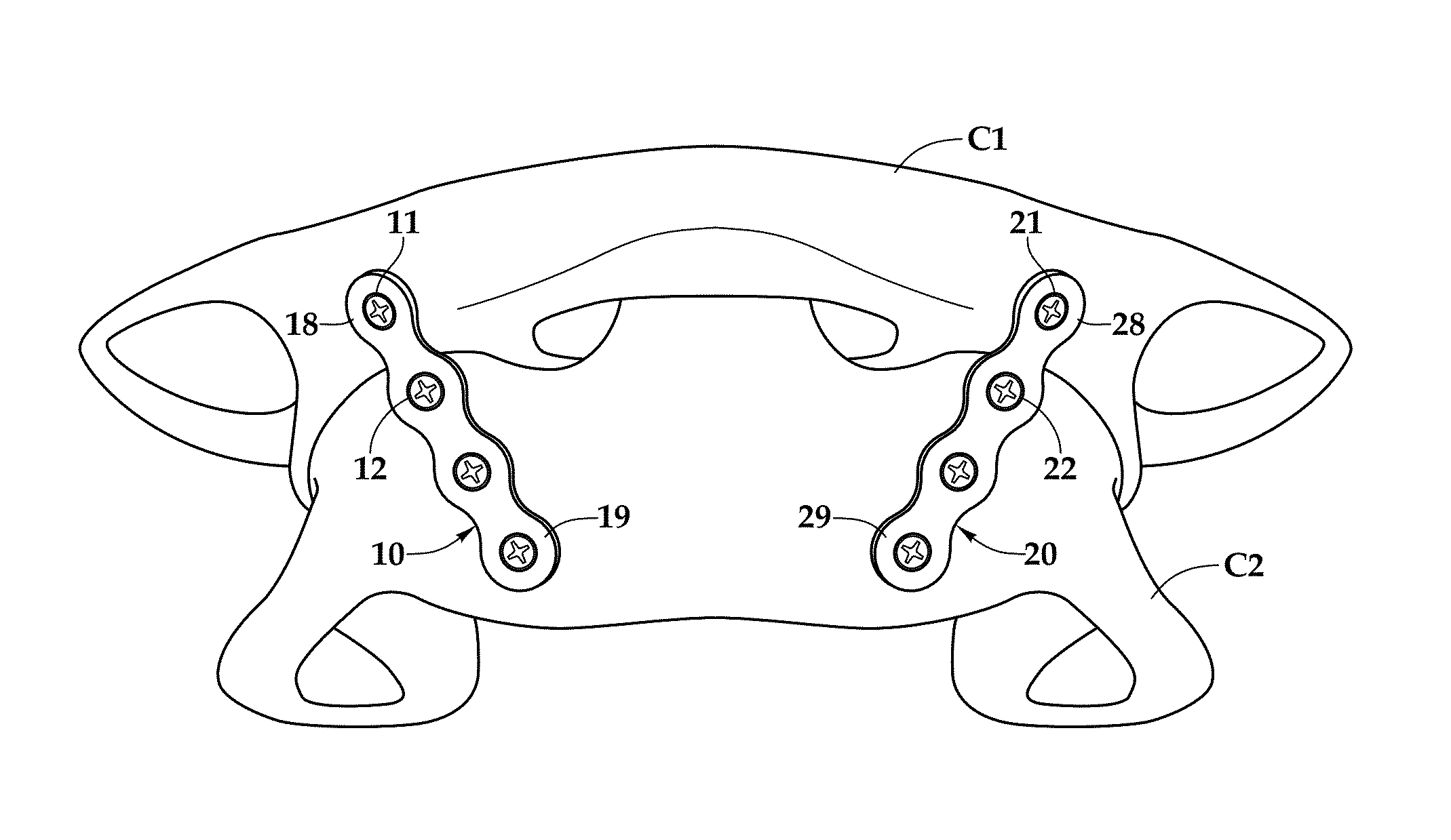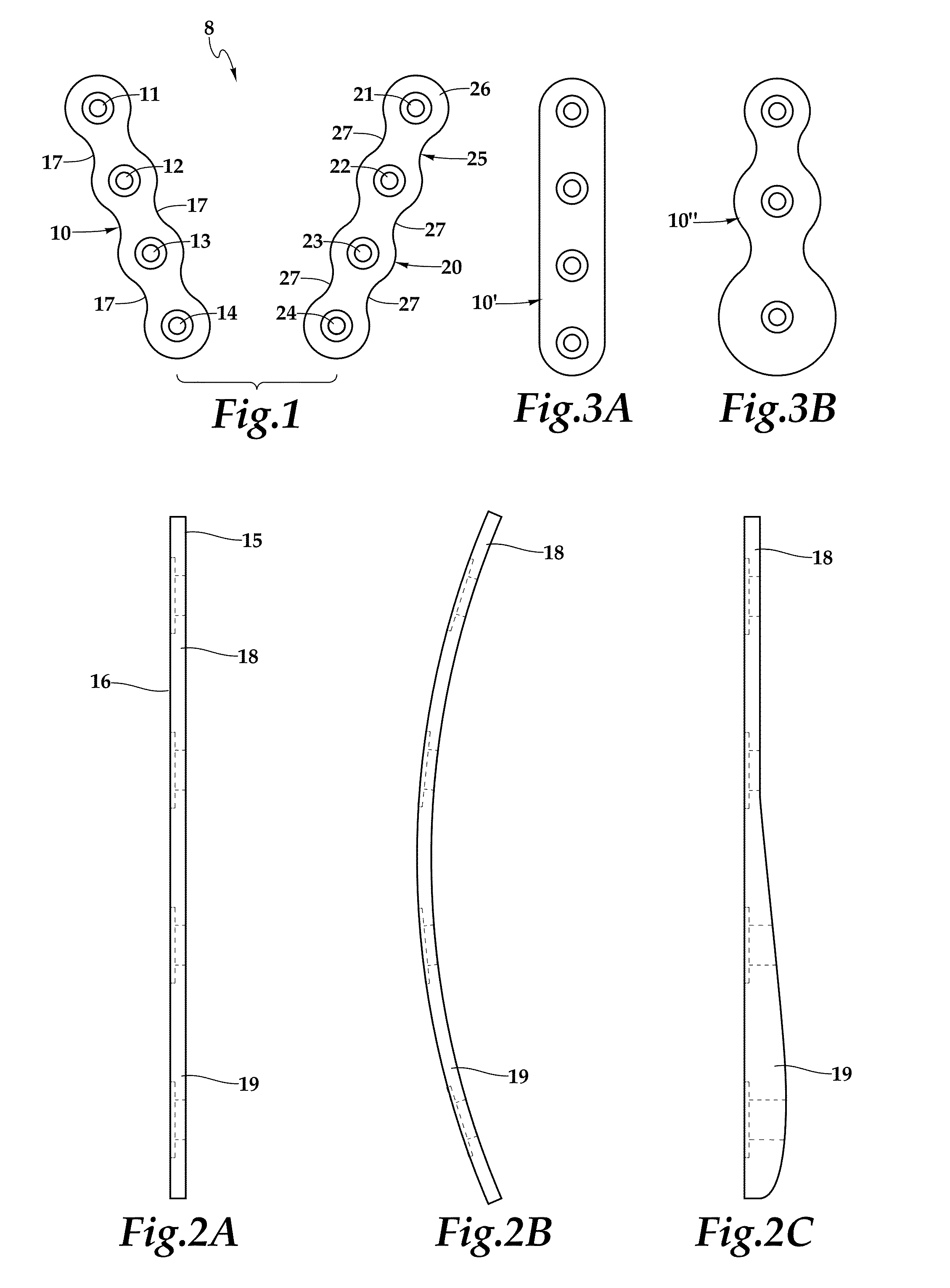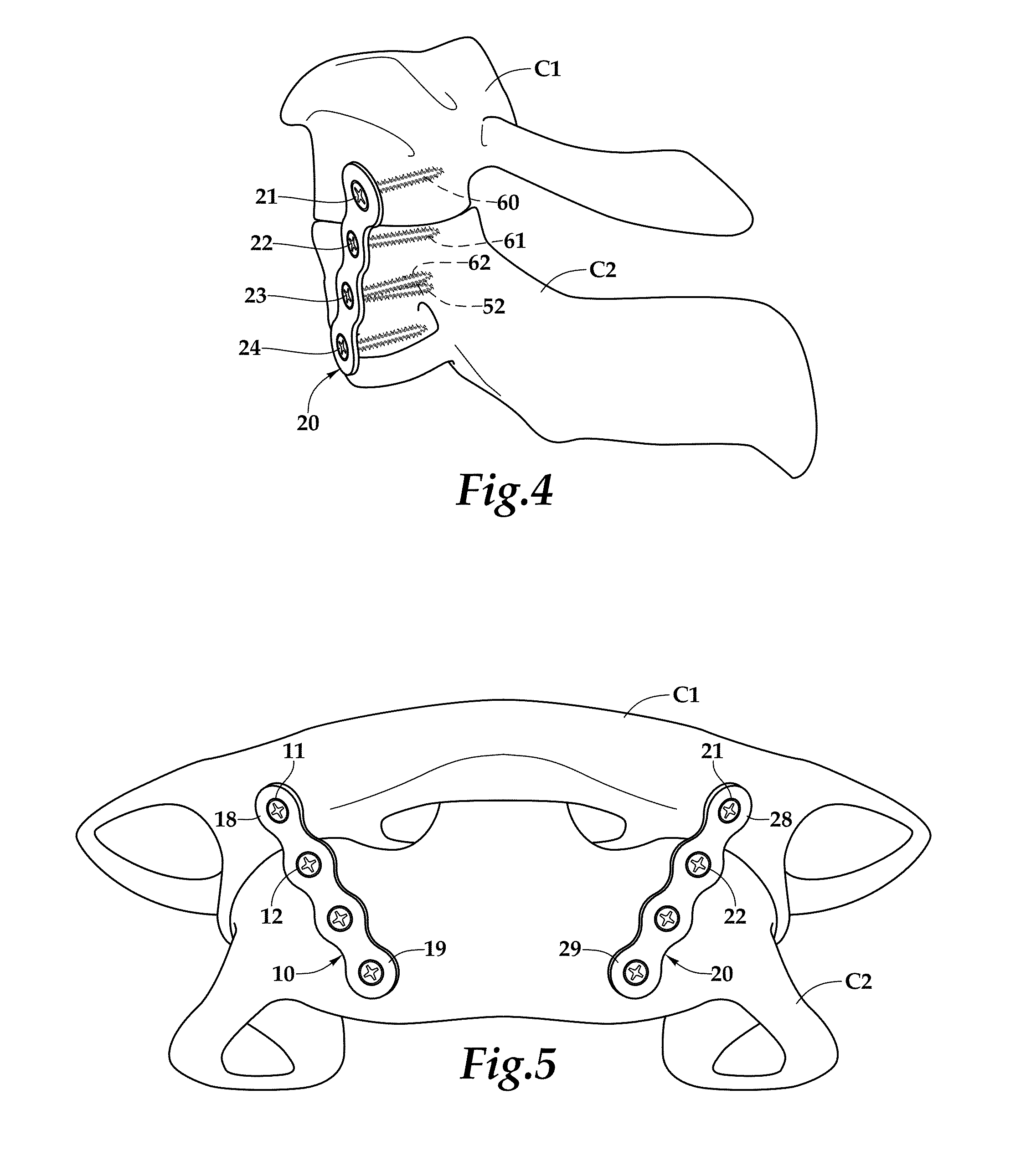Anterior atlantoaxial stabilization by lateral mass screw fixation
a technology of lateral mass screw and anterior atlanto, which is applied in the field of medical devices and medical procedures, can solve the problems of high risk of infection, complex instrumentation required for such anterior approaches, and not always availabl
- Summary
- Abstract
- Description
- Claims
- Application Information
AI Technical Summary
Benefits of technology
Problems solved by technology
Method used
Image
Examples
first embodiment
[0065]Turning to FIG. 11, another embodiment of device 308 is shown. Like numerals as compared to the first embodiment described herein, but with a 300s prefix, refer to similar elements in this embodiment. In this embodiment, device 308 may include a first plate 310, a second plate 320, and at least a third plate 330. First plate 310 may include openings 311-314 configured to receive screws to affix plate 310 to a C1 articular facet, a C2 articular facet, and the body of the C2 vertebra. Similarly, second plate 320 may include openings 321-324 configured to receive screws to affix plate 320 to the other C1 articular facet, the other C2 articular facet, and the body of the C2 vertebra.
[0066]Third plate 330 may include a plurality of openings, including at least openings 331, 332. Openings 331, 332 may be spaced such that, in use, they overlay a complementary pair of openings on plates 310 and 320, e.g., openings 313 and 323. Additionally or alternatively, third plate may include add...
second embodiment
[0072]Turning to FIG. 12, plate 330′ is shown. Plate 330′ may include openings 331′ and 334′ but not additional openings. Instead, plate 330′ may include a crossbar member 328′ between openings 331′ and 334′. Member 328′ may have a generally constant width along its length. That width preferably is less than a width of the rest of plate 330′ and may be between the plate width and the diameter of openings 331′, 334′. Like plate 330, plate 330′ may be between about 3 cm and about 4 cm long.
[0073]In one embodiment, plate 330 may be a separate, distinct member from one or both of plates 310, 320. In another embodiment, plate 330 may be joined to one or both of plates 310, 320 prior to insertion of any fasteners. For example, FIG. 13 shows an embodiment in which plate 330 includes a tab or other protrusion 335 extending downward around a perimeter of opening 324. Protrusion 335 may be configured to fit within opening 324 to prevent relative translation of plates 320, 330 when a screw is ...
PUM
 Login to View More
Login to View More Abstract
Description
Claims
Application Information
 Login to View More
Login to View More - R&D
- Intellectual Property
- Life Sciences
- Materials
- Tech Scout
- Unparalleled Data Quality
- Higher Quality Content
- 60% Fewer Hallucinations
Browse by: Latest US Patents, China's latest patents, Technical Efficacy Thesaurus, Application Domain, Technology Topic, Popular Technical Reports.
© 2025 PatSnap. All rights reserved.Legal|Privacy policy|Modern Slavery Act Transparency Statement|Sitemap|About US| Contact US: help@patsnap.com



